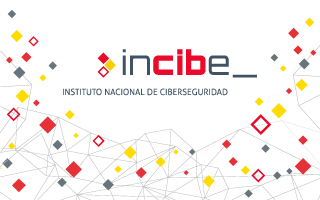

MITRE Caldera OT stands out mainly for being an open-source tool that allows the simulation of different cyber-attacks in industrial environments. This tool was created by MITRE and CISA (US Cybersecurity and Infrastructures Security Agency), as the experts saw the need to be able to improve and understand cybersecurity in industrial environments without using a high number of resources.
In addition, this tool is designed to be used by both the Red Team and the Blue Team, allowing both teams to collaborate with each other to improve the level of cyber security in these environments.

CAPEC (Common Attack Pattern Enumeration and Classification) is a project that focuses on enumerating and classifying common attack patterns on computer systems and providing a systematic approach to understanding and addressing the tactics used by attackers. Like CWE (Common Weakness Enumeration), CAPEC is an initiative of the computer security community and is maintained by the National Institute of Standards and Technology (NIST) in the United States. Recently in version 3.9, the project has incorporated a number of attack patterns related to the industrial world.
This article aims to show the reader the use of these codes, such as those used at the identifier level in CVEs, CWEs, etc., and which are related to many of the jobs that are carried out on a daily basis in the industrial cybersecurity sector.

The Zero Trust methodology is based on the premise that no user, device, or network can be trusted, and that access privileges and security levels must be continuously verified in all interactions.
The motivation for applying the Zero Trust methodology is the need to protect a company's sensitive data and digital resources against potential internal and external threats.

Firmware analysis can help to uncover potential vulnerabilities that would otherwise never have been discovered.
Although there are multiple types of attacks on IoT and IIoT devices, this guide focuses on the firmware of these devices to check for potential vulnerabilities, using security testing and reverse engineering to allow for an in-depth analysis of the firmware.

En este estudio, se expone brevemente el origen y evolución de la amenaza ransomware LockBit 3.0, a través del análisis de varias muestras maliciosa, con el objetivo de facilitar la información necesaria para poder identificar las características propias de este malware, su comportamiento y técnicas empleadas, permitiendo así una mejor identificación y respuesta ante ella.

Nobelium es la denominación de Microsoft para un grupo de atacantes que, según la atribución llevada a cabo por la Agencia de Seguridad de Infraestructura y Ciberseguridad (CISA) de Estados Unidos, pertenecen al Servicio de Inteligencia Exterior (SRV) de Rusia. Este grupo criminal es conocido por el ataque a la cadena de suministro de SolarWinds, y una campaña masiva de phishing haciéndose pasar por una empresa de desarrollo estadounidense.

Grandoreiro, also known as Delephant, is a banking trojan from South America, which has spread its operations to other regions, especially Europe, including Spain and Portugal. According to ESET researchers, it has been active since 2015, affecting countries in Latin America, mainly Brazil, where it was developed.

The malicious code of the ransomware known as ‘Hive’ represents a threat to all users, as it implements encryption functionalities on the information in an infected computer, making simple recovery of the data impossible. This threat attempts to use extortion to recover the information, demanding a payment and threatening publication of part of the stolen information on a blog through the network Tor if the payment is not forthcoming.

Anatsa is a banking Trojan designed for Android devices that has become particularly relevant since its discovery in January 2021. Throughout the study, a detailed technical analysis of the threat is carried out using a sample of the malicious code in question to show how this malware behaves and the possibilities it offers.



